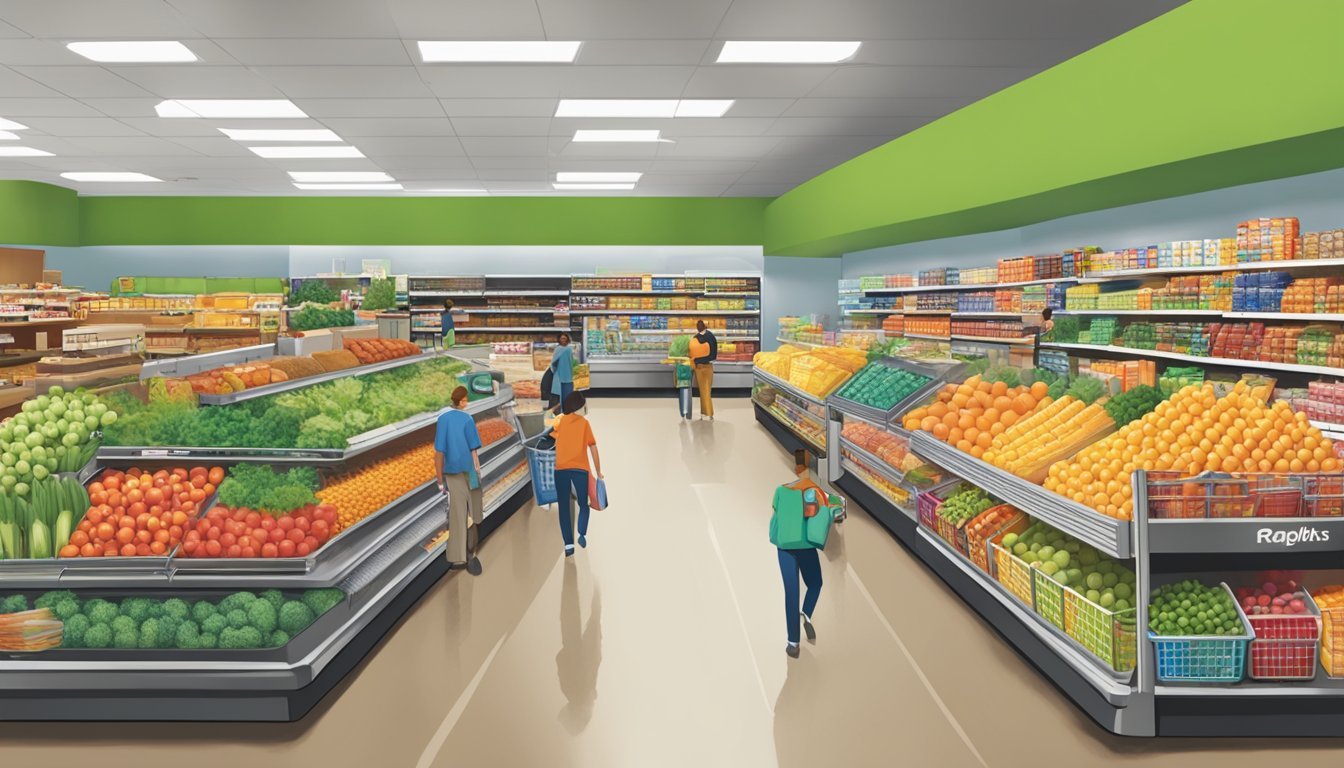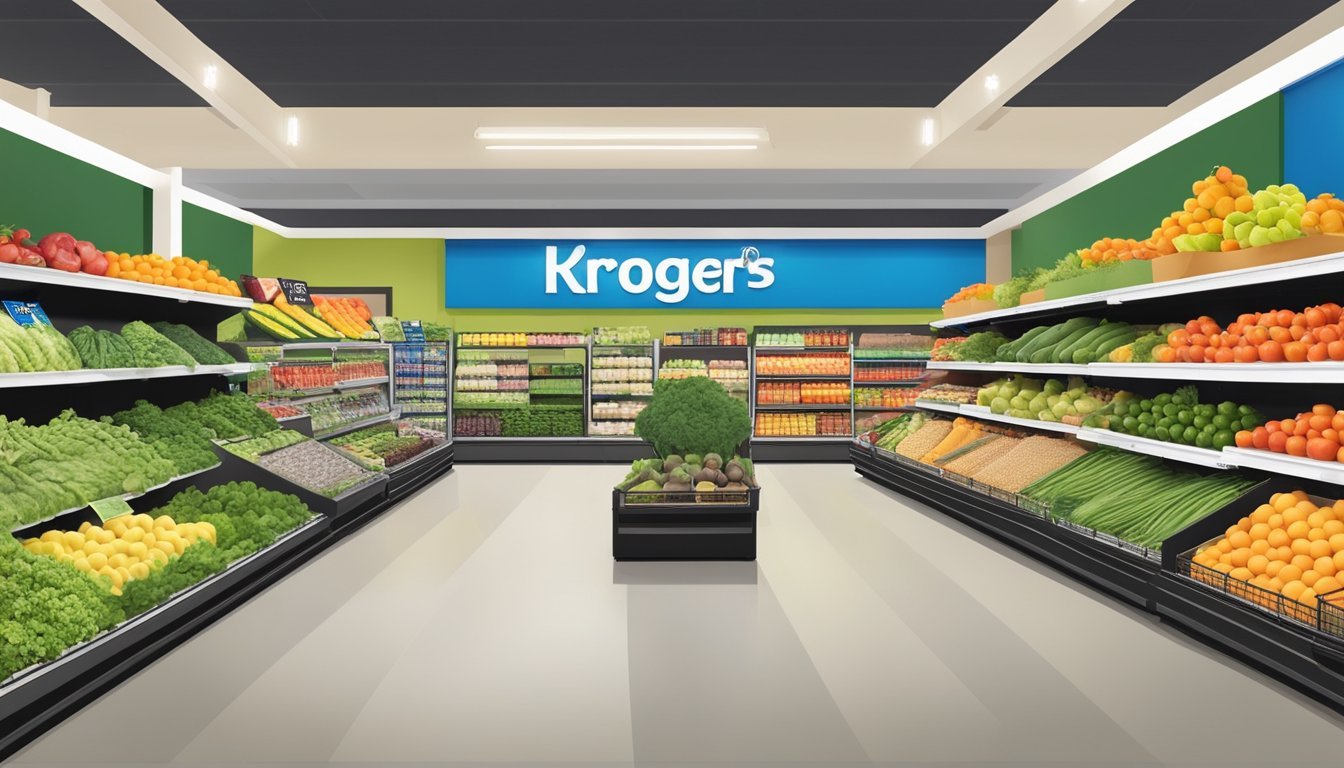Kroger vs Ralphs
Comparing Prices, Selection, and Convenience
When it comes to grocery shopping, consumers are often faced with a choice between different supermarket chains. Each store offers a distinct shopping experience, product selection, and pricing strategy, which can greatly influence a consumer's decision on where to shop. Kroger, with its significant market presence and recent bid to acquire Albertsons, the parent company of Ralphs, stands as a major player in the grocery sector. This acquisition would merge some of the most familiar grocery chains and has sparked discussion about market competition.
Kroger boasts a vast network of locations and house brands, appealing to a wide demographic with its variety of products. They have become known for their overall value, often reflected in the competitive pricing of everyday items such as pantry staples and fresh produce. Meanwhile, Ralphs offers a shopper experience characterized by regional familiarity, especially in Southern California, providing a selection tailored to local tastes and preferences.
The merger proposal has raised questions about the potential impact on consumers, including concerns about pricing and the diversity of available products. As these two grocery chains face scrutiny under the lens of consumers and regulatory bodies, shoppers are taking a closer look at what each store has to offer. Understanding these aspects is crucial for making an informed choice on which grocery store might be better for individual needs.
Company Backgrounds
In the competitive landscape of grocery retailers, Kroger and Ralphs stand as prominent entities, each with its unique history and market presence. The exploration of their backgrounds provides insights into their business evolution and regional impact.
Kroger Overview
The Kroger Co., founded in 1883 by Barney Kroger in Cincinnati, Ohio, has grown to become one of the largest supermarket chains in the United States. With a business model that includes a combination of food and drug stores, Kroger operates numerous regional stores and supermarket brands. The company's reach extends across various states, with store formats ranging from hypermarkets to superstores, and from supermarkets to convenience and jeweler stores.
Ralphs History
Ralphs, a subsidiary of Kroger since 1998, has its roots deeply implanted in the history of Los Angeles, California. Established by George Albert Ralphs and his brother, Walter Benjamin Ralphs, in 1873, Ralphs Grocery Company has evolved into a major regional player in the grocery store business. It was one of the first companies to establish a chain of grocery stores and played a significant role in developing the retail market in Southern California.
Store Presence and Locations
Evaluating store presence and locations of Kroger and Ralphs reveals the breadth and depth of these grocery chains' market impact.
National Footprint
Kroger operates a considerable number of supermarkets and multi-department stores across the United States. As a leading grocery retailer, it manages a variety of store formats, including the large Kroger Marketplace stores which often feature wide aisles and hi-tech shelf displays.
Ralphs, on the other hand, is predominantly found in Southern California. While it is a regional chain, Ralphs is a significant name on the West Coast and operates under Kroger's corporate umbrella. The national footprint of Ralphs is not as expansive as Kroger's when viewed in isolation from its parent company.
Local Influence
Kroger's influence is not just national but deeply embedded on a local level in various regions. Through a network of subsidiary banners including names like Ralphs, Vons, and others, Kroger has tailored its presence to cater to regional tastes and preferences.
In contrast, Ralphs has a concentrated local influence within Southern California. Despite being part of the larger Kroger family, Ralphs maintains a distinct identity and caters specifically to the consumer demographics of its local domain.
Pricing and Savings
When examining Kroger versus Ralphs, consumers should consider the aspects of everyday prices, promotions and discounts, and loyalty programs to gauge where they may find the greatest savings.
Everyday Prices
Kroger and Ralphs often have competitive pricing structures, but Ralphs has demonstrated a slight edge in overall pricing for a variety of grocery items. For example, a basket of 38 common items might total $105.33 at Ralphs, a marginally lower sum than that of Kroger for the same items.
Promotions and Discounts
Both Kroger and Ralphs offer weekly promotions and discounts on various items which can lead to significant savings. These can include temporary price reductions, loss leaders, and coupons. Consumers should note that the specific deals and discounts can vary greatly week-to-week, making regular scrutiny of circulars and store advertisements beneficial.
Loyalty Programs
Kroger features a loyalty program where customers can avail of digital coupons and fuel points, which offer savings on gas. Utilizing the Kroger Plus Card leads to exclusive store discounts and accrual of points redeemable for price deductions on fuel purchases. Ralphs offers similar benefits through its rewards program, allowing customers to use digital coupons and accumulate points for discounts on groceries and gas.
Product Range and Brands
When comparing Kroger and Ralphs, one will find diversity in store brands and a range of organic and specialty items, ensuring customers have access to a variety of products that cater to different tastes and dietary needs.
Store Brand Assortment
Kroger offers a multitude of store brands, such as Kroger Label, which includes a wide array of budget-friendly essentials from pasta to ice cream. Their Simple Truth line caters to health-conscious consumers, offering options like organic produce and natural food products. In contrast, Ralphs, as part of the Kroger family, also features these store brands, thus providing similar variety in terms of budget and dietary preferences.
Quality of Offerings
Both Kroger and Ralphs are committed to quality, with store brands like SE Grocers noted for being comparable in taste and quality to national brands. Customers at both stores can expect everyday items, such as white sandwich bread and raw chicken, to be fresh and consistent in quality, as they often are sourced from the same suppliers for Kroger's network of stores.
Organic and Specialty Items
Organic produce and specialty items are a strong suit for Kroger, with its Simple Truth line providing an extensive selection of organic options. Kroger's acquisition endeavors, such as the proposed merger with Albertsons, indicate a strategic move to broaden its organic and specialty range, thereby enhancing the diversity of fresh food available to customers. Ralphs, sharing its product portfolio with Kroger, benefits from these expansions, ensuring that shoppers have access to a rich assortment of fresh, specialty, and organic products.
Quality of Goods
When comparing Kroger and Ralphs, customers are interested in the quality of goods each store offers, particularly in their meat and produce, the freshness and shelf life of their products, and the availability of organic and non-GMO options.
Meat and Produce Standards
Kroger is recognized for its wide variety of meat options, which includes organic beef, adhering to stringent meat quality standards. Ralphs, which is part of the Kroger family, shares similar standards, ensuring that customers have access to high-quality meat and produce. Both stores conduct regular quality checks to maintain their product standards.
Freshness and Shelf Life
Freshness is a priority for both Kroger and Ralphs. These stores enforce strict controls to optimize the shelf life of perishable items, rotating stock frequently and handling goods in a way that preserves their freshness from the supplier to the store shelves.
Organic and Non-GMO Options
Kroger: Offers a substantial selection of organic and non-GMO products through its 365 by Whole Foods Market line, which includes organic pantry staples and snacks.
Ralphs: As part of the Kroger chain, Ralphs benefits from the same widespread selection of organic goods, catering to health-conscious and environmentally aware customers.
Customer Experience
When comparing Kroger to Ralphs, customer experience is a pivotal factor. Shoppers' interaction with staff service, checkout process efficiency, and store cleanliness shape their overall shopping satisfaction.
Staff Service
Kroger has invested in customer service training programs to ensure that staff are knowledgeable and can assist with customer inquiries confidently. At Ralphs, patrons often note the friendly approach of employees, creating a warm and welcoming shopping environment.
Ease of Checkout
Kroger utilizes technology to streamline the checkout process. Shoppers enjoy options such as self-checkout and mobile payment, reducing wait times. Ralphs also facilitates an efficient checkout experience, with well-staffed lanes and assistance readily available for a hassle-free transaction.
Store Cleanliness
Both Kroger and Ralphs prioritize store cleanliness, understanding its importance in customer retention. Shoppers at Kroger find consistently well-maintained facilities, while Ralphs maintains a clean shopping environment, ensuring aisles and checkout areas are kept tidy and presentable.
Impact of Competition
In the realm of grocery retail, the competition between Kroger and Ralphs pivots on how they respond to competitors' strategies and their ability to differentiate themselves in the market.
Competitors' Influence
Unlike Ralphs, which is a subsidiary of Kroger and competes primarily in the California market, Kroger is the nation's largest supermarket chain by revenue and must navigate a broader competitive landscape. They face intense rivalry from retail giants like Walmart and Target, which offer a wide range of products beyond groceries. Both competitors draw in consumers with their diverse merchandise, from household goods to electronics, presenting a challenge to Kroger's grocery-focused model. Additionally, Amazon has become a formidable contender with its acquisition of Whole Foods and its push into online grocery services, catalyzing a shift in consumer expectations for convenience and speed.
Market Differentiation
Kroger distinguishes itself through a variety of store formats and private label offerings, aiming to meet different consumer needs. It operates a mix of hypermarkets, supermarkets, superstores, and department stores. In contrast, Ralphs maintains a traditional supermarket model. Kroger's strategy for differentiation also involves leveraging technology for personalized customer experiences and pricing, which is significant in maintaining a competitive edge. In direct response to competition, Kroger has highlighted plans to invest in store improvements and lower prices which could impact consumer loyalty and market share.
Both entities must adapt and innovate continuously to remain relevant in an industry where consumer preferences and competitive moves change rapidly.
Future Outlook
In the competitive landscape of grocery chains, Kroger and Ralphs are shaping their futures by aligning with industry trends and adapting to reflect consumer priorities. Financial performance and ethical considerations such as animal welfare are key factors in their strategic positioning.
Industry Trends
Grocery chains are facing intense pressure to align with market shifts and evolving consumer expectations. Trends indicate that sustainability and health-conscious offerings are becoming paramount. Revenue growth is increasingly tied to a store's ability to supply products free from growth hormones and antibiotics, as a growing segment of consumers favors healthier options and transparent sourcing.
Kroger has recognized these trends, investing in sustainable practices and seeking to offer a wider variety of organic and natural foods. Their initiatives often reflect their commitment to minimizing the use of antibiotics and growth hormones, which can potentially boost their market appeal.
Ralphs, similarly, is adapting to these trends with its range of organic products and by prominently labeling items that meet higher animal welfare standards. However, the impact of such changes on their revenue will depend on consumer responses and the overall effectiveness of integration into their business model.
Adaptation to Consumer Needs
Consumers increasingly demand convenience and customization in their shopping experience. Grocery chains that quickly implement technologies for online shopping and home delivery services are positioned to meet these needs effectively.
Kroger utilizes data analytics to understand and predict consumer behavior, tailoring their offerings to suit emerging preferences. Their revenue is expected to reflect the efficacy of these personalized strategies.
Ralphs faces a similar imperative to adapt. Their focus on customer service and community-based stores might give them a distinct edge in nurturing customer loyalty.
Both Kroger and Ralphs must continue to evolve to stay relevant and competitive. Their success depends on their agility in navigating industry trends and their commitment to meeting the high standards of today's informed consumers.





